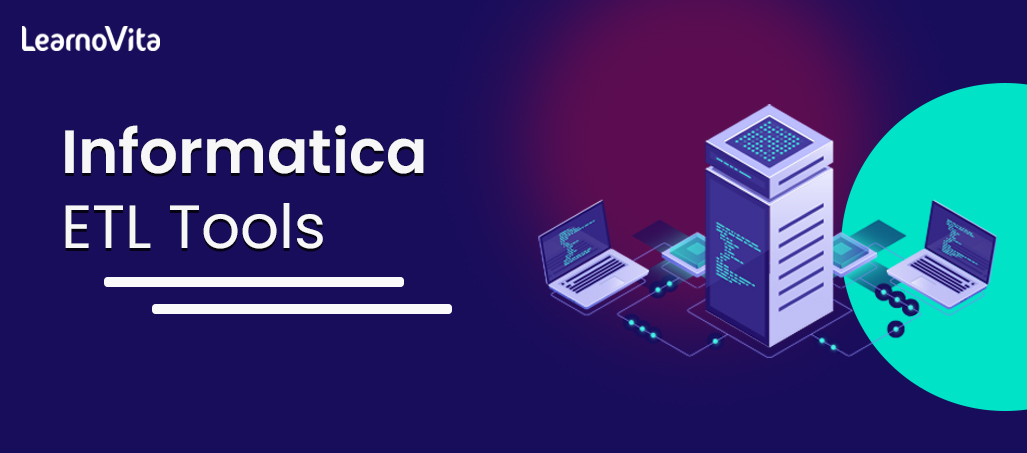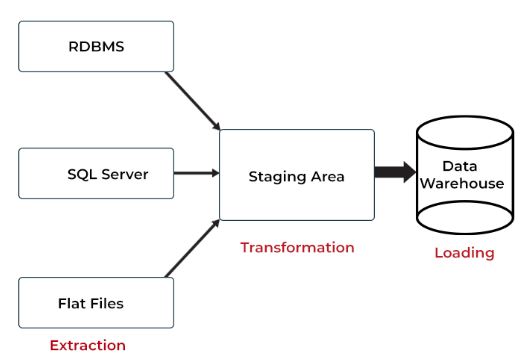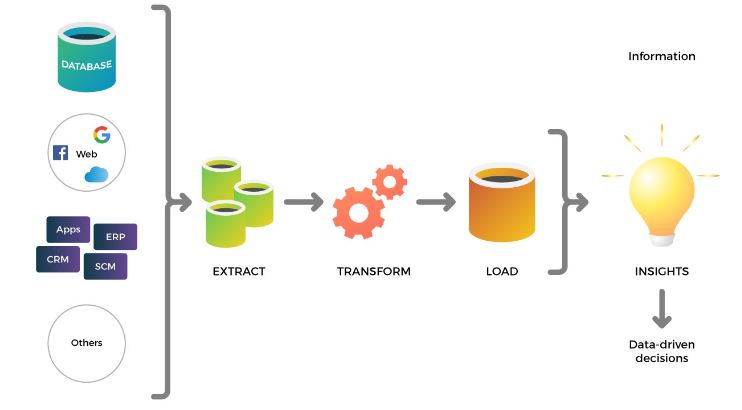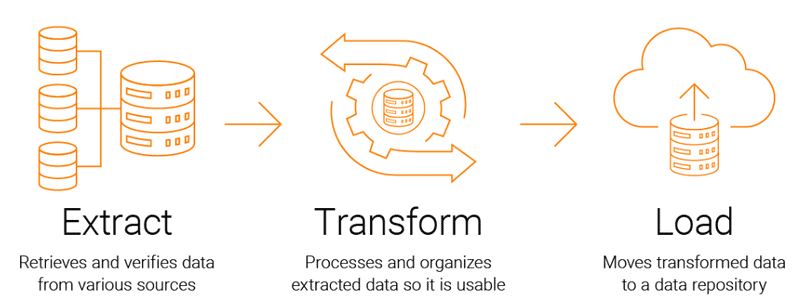- Difference between Data Lake vs Data Warehouse: A Complete Guide For Beginners with Best Practices
- What is Data Mining?| All you need to know [ OverView ]
- What is Data Mining and Data Warehousing?
- Clustering in SSIS | A Definitive Guide with Best Practices [ OverView ]
- What is Data Mart in Data Warehouse? :A Definitive Guide with Best Practices & REAL-TIME Examples
- Accessing Heterogeneous Data In SSIS | Step-By-Step Process with REAL-TIME Examples
- How to Use Java Classes In Talend ? : Step-By-Step Process with REAL-TIME Examples
- What is ODI? ( Oracle Data Integrator ) – A Complete Beginners Guide
- What is Logging in SSIS ( SQL Server Integration Services ) | A Complete Guide with Best Practices
- Applications of Data Mining Free Guide Tutorial & REAL-TIME Examples
- Informatica ETL Tools | Free Guide Tutorial & REAL-TIME Examples
- What Is Data Mining ? – Everything You Need to Know
- What is Amazon Redshift?
- What is Informatica PowerCenter?
- Difference between Data Lake vs Data Warehouse: A Complete Guide For Beginners with Best Practices
- What is Data Mining?| All you need to know [ OverView ]
- What is Data Mining and Data Warehousing?
- Clustering in SSIS | A Definitive Guide with Best Practices [ OverView ]
- What is Data Mart in Data Warehouse? :A Definitive Guide with Best Practices & REAL-TIME Examples
- Accessing Heterogeneous Data In SSIS | Step-By-Step Process with REAL-TIME Examples
- How to Use Java Classes In Talend ? : Step-By-Step Process with REAL-TIME Examples
- What is ODI? ( Oracle Data Integrator ) – A Complete Beginners Guide
- What is Logging in SSIS ( SQL Server Integration Services ) | A Complete Guide with Best Practices
- Applications of Data Mining Free Guide Tutorial & REAL-TIME Examples
- Informatica ETL Tools | Free Guide Tutorial & REAL-TIME Examples
- What Is Data Mining ? – Everything You Need to Know
- What is Amazon Redshift?
- What is Informatica PowerCenter?

Informatica ETL Tools | Free Guide Tutorial & REAL-TIME Examples
Last updated on 28th Oct 2022, Artciles, Blog, Datawarehouse
- In this article you will learn:
- What is Informatica?
- Why is Informatica ETL Tool so popular?
- How is the Informatica ETL implemented?
- Features of ETL Tool.
What is Informatica?
Informatica provides a number of data integration products.Even so, Informatica PowerCenter seems to be a portfolio’s flagship product.Informatica PowerCenter has become so well-known that it is now synonymous with an Informatica.So now, whenever say Informatica on the blog, referring to a Informatica PowerCenter.Informatica is a data integration tool that is built on a ETL architecture.It provide data integration software and services to a wide range of a businesses, enterprises, and government agencies, including telecommunications, health care, financial, and insurance services.
What is ETL?
- ETL seems to be a form of information integration that entails an architecture which extracts, transforms, and loads data into the database server or file.
- It serves as the basis of data warehouse.
- Ab Initio, a multinational software company based in a Lexington, Massachusetts, developed ETL, a GUI-based parallel processing software.

An ETL system performs a following tasks:
- Data is extracted from source systems.
- The data is be transformed and cleaned up.
- Data is indexed and summarised.
- Data is loaded into warehouse.
- Changes made to a warehouse’s source data are tracked.
- keys are be restructured.
- Keeps metadata.
- Updates a warehouse with new data.
Why is Informatica ETL Tool more popular?
- Deployments must be credible and also automated.
- Reducing a risks associated with adoption of new technologies.
- Data that is extremely secure and more measurable.
- Self-owned as well as a configurable permission access.
- Data disaster recovery, data monitoring, and data maintenance on exclusive basis.
- Visual information delivery that is appealing and also artistic.
- Server that is be centralised and cloud-based.
- Firmware protection for a data and network protocols within organisation.
How ETL is applied in a real time?
- Informatica seems to be a firm that delivers data integration products like ETL, data masking, data quality, data replication, data virtualization, master data management, and so on.
- Informatica ETL is the widely used data integration platform for the integrating to and retrieving data from different data sources.
The following seem to be some typical use cases for the approaching this software:
- A company that is transitioning from existing software system to the new database system.
- To establish Data Warehouse in an organisation in which data is moved from a Production/data gathering system to Warehouse.
- It functions as a data cleansing tool, detecting, correcting, or removing data from a corrupt or misleading records in the database.

How is Informatica ETL implemented?
Extract: The data is derived from a different data sources. Relational databases, XML and flat files, Information Management Systems (IMS), and data structures are examples of common data-source formats.An instant data validation is carried out to ensure that data pulled from a sources has the correct values in the given domain.
Transform: To gear up collected information for lifting into aim data source, a set of rules or logical functions such as cleaning data are applied. Cleaning data entails only sending the “right” data to a target source.There are numerous data conversion types which can be implemented based on the needs of a business.A few of them would be column or a row-based, have coded and calculated values, be key-based, join different data sources, and so on.
Load: Merely upload a files into target source of data.
Features of ETL Tool:
1.Processing in Parallel:
- ETL is finished with the aid of a concept known as a Parallel Processing.
- Parallel processing is just evaluation that is performed on different tasks that are running at the same time.
ETL supports a three types of parallelism:
- Data by dividing a bigfile into a smaller files.
- The pipeline are enables multiple components to operate on a same data at the same time.
- The software packages are a component.
- Processes entailed operating distinct data from various data at the same time to finish the same task.

2.Data Reuse, Data Re-Run, and Data Recovery:
- Data Reuse, Data Re-Run, and Data Recovery are all terms used to explain the reuse, re-run, and recovery of data.
- Every data row is assigned a row id, and every process step is assigned a run id, so that data can be tracked using these identifiers.
- Checkpoints have been established to mark completion of particular phases of the process.
- These checkpoints indicate that are must re-run the query in order to finish the task.
3.Visual ETL:
- Visual ETL refers to a sophisticated ETL tools like PowerCenter and Metadata Messenger that enable to create data sets that are quicker, more automated, and more influential based on the business requirements.
- Could indeed drag and drop ready-made dataset and metadata components onto solution that instantly manually configured, integrates, extracts, transactions, and loads on a one’s target network.
Characteristics of ETL:
- It is expected to improve a data connectivity as well as expandability.
- It should be able to link the numerous relational databases.
- This should endorse csv-data files as well, so that end users can import them with a little or no code.
- It must have a user-friendly graphical user interface that allows end users to simply incorporate information with visual mapping system.
- It really should allow finished users to customise a information modules to meet their specific business requirements.
Future of ETL:
- Informatica -ETL goods and services are designed to offer better company’s operations, decrease a big data governance, offer additional elevated data security, backup and recovery in an event of an emergency .
- Optimise a process of creating and creatively designing visual data.
They are widely classified as below :
- ETL with a Big Data, cloud, SAS.
- ETL with a HADOOP and metadata.
- ETL as a Self-service Access.
- A Mobile optimized solutions.